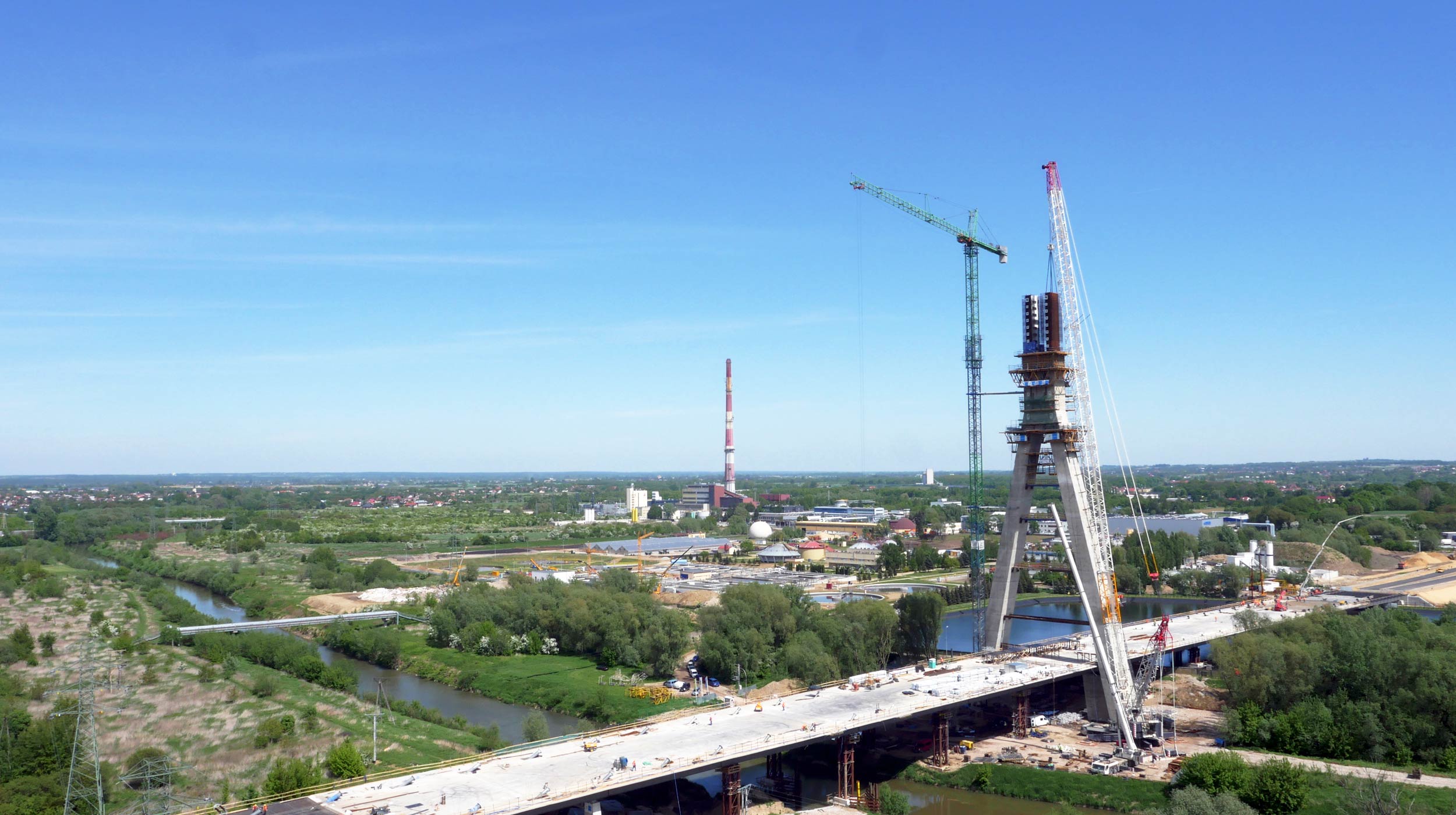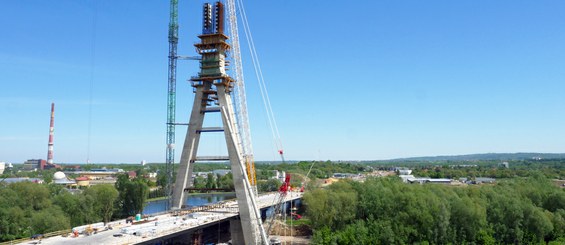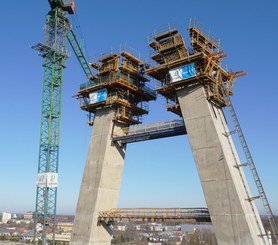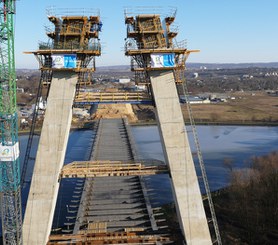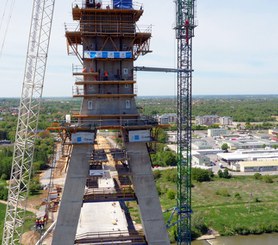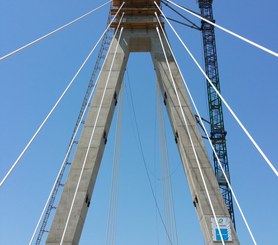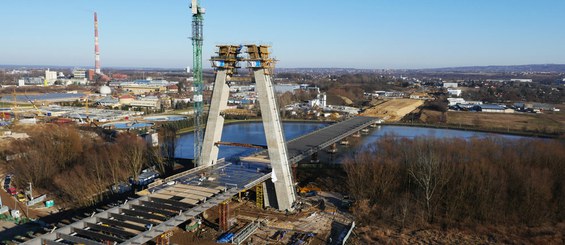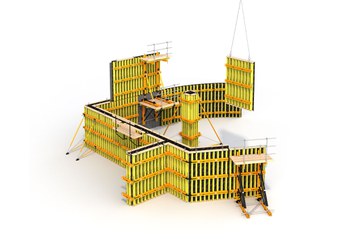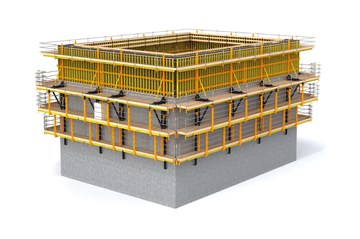Description
The unique element of the project is a reinforced-concrete pylon measuring 108.5 meters in height. It was completed in a total of 26 cycles. The first fourteen pours formed the pylon legs, the following three created the cross beam joining the legs and the final nine were dedicated to the cable-stayed portion that extends above the motorway. The bridge, approximately 480 m long, will be the longest structure of its kind in the region of Podkarpacie.
ULMA solution
In the initial stage the bases of the pylon legs were completed. Various structures 14.5 m in height with T-shaped cross-sections were created using ENKOFORM VMK formwork, which was subsequently used to install the self-climbing systems. To ensure the safety of all personnel engaged in the installation and pouring of the inclined elements of the structure, the formwork system was built with four complete work platform levels, equipped with vertical access between them.
The pylon legs are 5.75 m by 4.75 m box girders, with wall thickness varying between 1.30 m and 0.80 m. ULMA supplied two sets of ATR-B Self-Climbing System formwork, to which were added mechanical and hydraulic aids that allowed the formwork to be elevated without the need for a crane.
Given the geometry of the structure, the various work platforms -- main, operation, and cone recovery -- were designed using a system of high-capacity MK Trusses. The trusses were designed to form rings that stack vertically to surround the legs of the tower.
The exterior formwork, weighing more than 30 metric tons, was installed using only four ATR brackets. The carriages attached to the brackets allowed for the formwork to roll back up to 80 cm, providing easy access to the steel reinforcement and permitting the formwork to be handled without difficulty. The interior part of the self-climbing system, weighing 4 metric tons, was installed using two ATR brackets. As the number of anchors needed for the suspended structure was substantially reduced, it was possible to decrease cycle time from seven to three working days.
The walls of the pylon legs were made using ENKOFORM VMK formwork, measuring 4.8 m and 4.5 m in height, with two interconnected platform levels.
ULMA's ATR self-climbing system allowed construction to continue even in extremely inclement weather; the structure was raised in winds reaching 80 km/h. The process of placing the formwork for a new pour lasted approximately 6 hours, while the lifting was completed in 30 minutes. The remaining time was dedicated to preparation.
To construct the cross beam with a rectangular cross-section, which joins the tower legs at a height of 70 metres, the ATR system with BMK brackets was chosen. Eight BMK rotating consoles were employed to prop the formwork for the lower face of the reinforcement beam.
The exterior walls of the cross beam were completed using ENKOFORM VMK beam formwork while the interior walls were made using ORMA modular formwork. The upper slab, or cap of the cross beam, was completed in the 17th stage using the ENKOFLEX formwork system and ALUPROP aluminium props.
Due to the presence of the cable anchors, the cable-stayed section of the pylon was strengthened with a steel core positioned inside the tower and joined to the reinforced-concrete wall. The upper part of the structure was completed in nine stages, using only one ATR Self-Climbing System. The exterior formwork, weighing more than 27 metric tons, was placed using four ATR brackets. The brackets, equipped with a system of hydraulic cylinders, allowed the entire structure to be elevated. Unlike the pylon legs, the walls of the cable-stayed section were formed with KSP platforms supporting the ENKOFORM VMK formwork.

